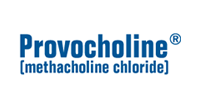Putting a Face to Supplemental Oxygen and the SOAR Act

My sister and I have Primary Ciliary Dyskinesia (PCD) and Bronchiectasis. In June of 2013 we were prescribed supplemental oxygen. My sister needed it 24/7 and I needed it for exertion. At that time, my sister had a 3 and 1-year-old at home. She was given oxygen tanks for leaving the house. She struggled transporting an E tank in one hand and carrying her 1-year-old in the other, with no hand left for her 3-year-old. Life would have been much easier if she’d had access to liquid oxygen. This would have allowed her to wear a 5-pound liquid tank in a backpack and had both hands free for her kids.
Liquid oxygen is the preferred modality for those with higher flow needs. It is lighter and/or lasts longer than compressed air tanks. Unfortunately, the number of patients receiving liquid oxygen has declined 89% between 2013-2019, according to a study by Kevin Duan, et al, published in 2022.
There are efforts to change this and make the lives of those on supplemental oxygen easier. The Supplemental Oxygen Access Reform (SOAR) Act was reintroduced into both Houses of Congress on April 10, 2025, with bipartisan support. The bill is similar to the one introduced in 2024, however additional language for patient protection from fraud has been added.
If you are not familiar with the SOAR Act, the bill is based on 4 pillars of oxygen reform:
- Ensure supplemental oxygen is patient centric.
- Change “home oxygen” to “supplemental oxygen” to ensure people requiring oxygen can live full lives outside their primary residence.
- Create a patients’ bill of rights to ensure care is focused on patient needs.
- Ensure access to liquid oxygen for patients for whom it is medically necessary.
- Create a statutory service element to provide adequate reimbursement for Respiratory Therapists to ensure patients have access to their expertise.
- To ensure predictable, adequate reimbursement, and to protect against fraud and abuse, establish national standardized documentation requirements that rely upon a template rather than prescriber medical records to support claims for supplemental oxygen suppliers.
Many long-term supplemental oxygen users, who were lucky enough to have liquid oxygen years ago, have had it taken away. Not only are they saddled with heavier compressed air tanks, but they are also being given a limited number of tanks. Several of my friends talk about having to ration their oxygen, either using less than they need to make it last longer or missing activities with friends and family because the tanks are needed for doctor’s appointments. It is time for change!
The links below provide additional details about the SOAR Act and allow you to share more about your experiences with supplemental oxygen.
Should you be interested in supporting the SOAR Act, the American Lung Association has created this link: https://lung.quorum.us/campaign/PasstheSOARAct/.
Together, we can make a difference for those needing supplemental oxygen.
Author: Mary Kitlowski, President & Founder








